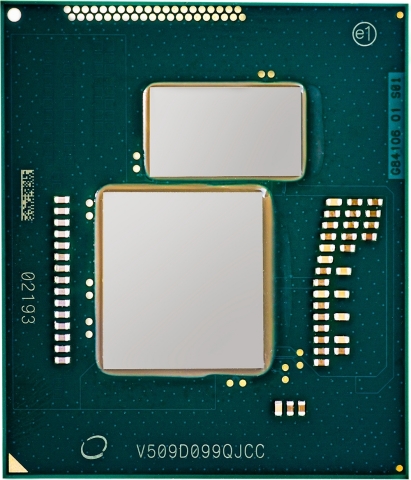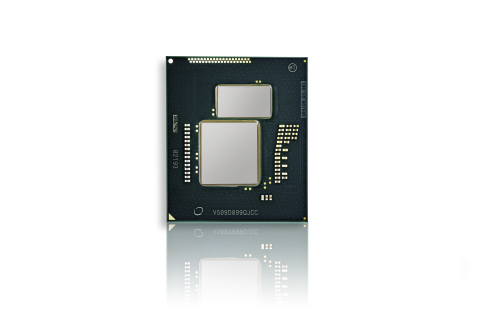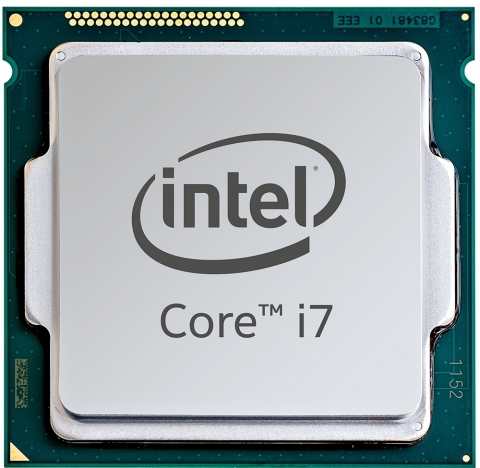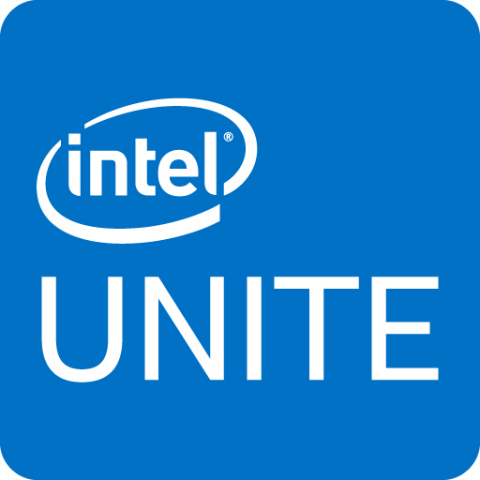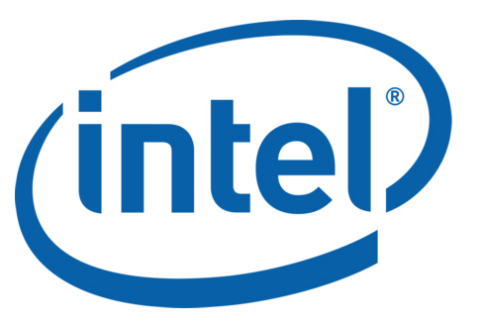TAIPEI, Taiwan--(BUSINESS WIRE)--Intel Corporation today announced products and solutions that will deliver new user experiences and support the computing ecosystem’s expansion into new areas. During the opening keynote address at Computex 2015, Kirk Skaugen, senior vice president and general manager of Intel’s Client Computing Group encouraged the Taiwan ecosystem to work together and capture the opportunity to shape the future of computing.
“The power of Moore’s Law has enabled incredible computing innovation over the past 50 years and because of it, nearly everything in the future will have the ability to compute and connect,” said Skaugen. “Our 30-year history of collaboration with Taiwan has delivered historic innovation to the world, from personal computing to the cloud and data centers. The next 30 years will see even greater innovation as we deliver new computing experiences and bring intelligence and connectivity to the Internet of Things together.”
Skaugen offered predictions into the future of computing and showcased the products and platforms that will take us there. He also showed how these innovations will soon enable intelligence to be everywhere.
Internet of Things News:
- Intel introduced the expansion of the Intel® IoT Gateway product family. The latest gateway reference design offers expanded choice in silicon and software with the addition of Intel® Core™ processor-based gateways and Wind River* Intelligent Device Platform XT 3 with flexible packaging options for applications that require a low cost of entry.
- Intel also expanded the choice of operating systems for Intel® IoT Gateway reference designs with the availability of Ubuntu Snappy Core from Canonical*. This builds upon the current OS availability from Microsoft* and Wind River.
- Specifically for IoT solutions, especially retail and medical environments, Intel announced the new Intel® Pentium®, Intel® Celeron® and Intel® Atom™ processors. With stunning graphics performance in a low thermal envelope, the processors are customized for IoT and offer seven year availability.
Computing Experiences and Platform News:
- Intel® Unite™ was introduced as a new cost-effective business solution designed for easy and intuitive collaboration and improved meeting productivity. With a select Intel® Core™ vPro™ processor-based mini PC in the conference room and the Intel Unite application running on devices, existing conference rooms are modernized and transformed into smart and connected meeting spaces with enhanced security.
- In the biggest advancement since its inception, Thunderbolt™ 3 delivers one computer port that connects to Thunderbolt devices, every display and billions of USB devices. For the first time, a single cable now provides four times the data and twice the video bandwidth of any other cable, while also supplying power. It’s unrivaled for new uses, such as 4K video, single-cable docks with charging, external graphics and built-in 10 GbE networking. Initial products are expected to start shipping before the end of this year, with more expected in 2016.
- The 5th generation Intel Core family also now includes the first LGA socketed desktop processor with integrated Iris™ Pro graphics, Intel’s most powerful client processor graphics and media engine. The lower 65-watt thermal design power (TDP) allows full PC performance in a broad range of form factors, including smaller and thinner mini PCs and all-in-one desktops, providing up to two times better 3-D graphics performance, 35 percent video conversion and 20 percent compute performance over the previous generation processors.1
- Intel also introduced 5th generation Intel® Core™ mobile processors for mobile and IoT with integrated Intel® Iris™ Pro Graphics. Optimized for gamers and content creators on the go, Intel’s fastest and most responsive mobile processors have Intel Iris Pro graphics 6200 and provide up to two times higher compute performance and two times better 3-D graphics performance compared to the current generation.2 These processors are also ideal for medical, public works and industrial IoT applications with the inclusion of critical features for powerful IoT designs, including ECC memory support, Intel® vPro™ technology and offer seven year availability.
- Highlighting progress toward a future of a completely wireless computing experience, Intel announced it is working with Targus* to deliver Rezence standard-based wireless charging solutions. Intel also recently announced an agreement with China-based Haier* to bring wireless charging solutions to restaurants, hotels, cafés, and airports in China later this year. Additionally, Intel will work with A4WP members, Foxconn Interconnect*, Basecom* and original design manufacturers BYD* and Primax* to bring wireless charging solutions to market later this year.
Data Center News:
- Intel introduced the Intel® Xeon® processor E3-1200 v4 product family, the first time the Xeon processor line has included integrated Intel® Iris™ Pro graphics P6300. Built on 14nm process technology and designed for visually intensive, cloud-based workloads such as high-definition (HD) video transcoding and remote workstation delivery, the product family delivers up to 1.4x the performance for video transcoding3 and up to 1.8x the 3-D graphics performance4 compared to the prior generation.
About Intel
Intel (NASDAQ:INTC) is a world leader in computing innovation. The company designs and builds the essential technologies that serve as the foundation for the world’s computing devices. As a leader in corporate responsibility and sustainability, Intel also manufactures the world’s first commercially available “conflict-free” microprocessors. Additional information about Intel is available at newsroom.intel.com and blogs.intel.com, and about Intel’s conflict-free efforts at conflictfree.intel.com.
1 Intel® Core™ i7-5775C with Intel® Iris® Pro graphics 6200 compared to 65W Intel® Core™ i7-4790S with Intel® HD graphics 4600 using 3DMark11 – Graphics score performance preset, HDxPRT_2014 Convert Videos, SPECint_rate_base2006*.
2 Intel® Core™ i7-5950HQ with Intel® Iris® Pro graphics 6200 compared to i7-5600U with Intel HD Graphics 5500 using SPECint_rate_base2006, 3DMark11 – Graphics score performance preset.
3 Up to 1.4x transcoding performance with Intel® Xeon® E3-1285L v4 when compared with Intel® Xeon E3 v3 on Intel Media Server Studio 2015 R3 Essentials Edition. Number of real time threads transcoded simultaneously: 10 on E301286L v3, 14 on E3-1285L, using 1080p30 20Mbps streams. Baseline configuration: Intel Rainbow Pass SR1200V3RP Platform with Intel® Xeon® E3-1286Lv3 (65W, 4C, 3.4GHz, Intel® Iris Pro Graphics P6300) or Intel® Xeon® Processor E3-1286L V3 (65W, 4C, 3.2GHz, Intel® HD Graphics p4700), 32 GB (4x8GB DDR3-1600MHz UDIMM), 160GB 7200 SATA HDD, Turbo Boost Enabled, HT Enabled, Windows Server 2012 R2, Intel Media Server Studio 2015 R3 Essentials Edition, Multi Transcoding Sample Version 6.0.0.36, Intel graphics driver pGFX 10.18.14.4172, BIOS S1200RP.86B.03.01.002. Source: Intel internal measurements as of May 2015
4 Up to 1.8x better performance on 3DMark11*. Baseline configuration: Intel® Hermosa Beach 2 CRB platform with Intel® Xeon® E3-1286v3, 32GB memory (4x 8GB DDR3-1333 UDIMM), 64GB SATA SSD, Turbo Boost Enabled, HT Enabled, Red Hat Enterprise Linux 6.3, Oracle Java Hotspot Java 1.7.0_17. 3DMark Score 1524, Source: Internal Intel® measurements as of April 2014. Intel® Xeon® workstation platform (Intel S1200RP Board) with one Intel Xeon processor E3-1285 v4 (quad-core, 3.5GHz, 6M cache) BIOS S1200RP.86B.03.01.0002.041520151123, Intel HT Technology best configuration, 32GB memory (4x8GB DDR3-1600 ECC UDIMM), Intel Iris Pro Graphics P6300 with driver 10.18.10.3980, Intel SSDSC2BB300G4, Microsoft Windows 8.1*. 3DMark Score 2881, Source: Intel internal testing as of June 2015.
Systems:
Intel® Core™ i7-4790S processor (up to 4.0GHz, 4C8T, 8M Cache), Intel Reference Board, Memory: 2x4GB DDR3-1600, Storage: 160GB Intel Series 320 SSD, Display Resolution:1920x1080, Intel HD Graphics 4600, Windows* 8.1
Intel® Core™ i7-5775C processor (up to 3.7GHz, 4C8T, 6M Cache), Intel Reference Board, Memory: 2x4GB DDR3-1600, Storage: 160GB Intel Series 320 SSD, Display Resolution:1920x1080, Intel Iris™ Pro Graphics 6200, Windows* 8.1
Intel® Core™ i7-5950HQ processor (up to 3.8GHz, 4C8T, 6M Cache), Intel Reference Board, Memory: 2x4GB DDR3-1600, Storage: 160GB Intel Series 320 SSD, Display Resolution:1920x1080, Intel Iris™ Pro Graphics 6200, Windows* 8.1
Intel® Core™ i7-5600U processor (up to 3.7GHz, 2C4T, 4M Cache), Intel Reference Board, Memory: 2x4GB DDR3-1600, Storage: 160GB Intel Series 320 SSD, Display Resolution:1920x1080, Intel HD Graphics 5500, Windows* 8.1
Tests:
HDxPRT* 2014 – Convert Videos: High Definition Experience & Performance Ratings Test, is a benchmark from Principled Technologies* that measures Windows* media editing performance. It uses mainstream applications to test the performance of the system.
3DMark* 11: 3DMark* 11 is a benchmark from Futuremark* that measures DX 11 gaming performance. There are four DX 11 graphics tests with three quality presets: Entry, Performance, Extreme. Reported metrics: Graphics Score (GPU), Physics Score (CPU), Combined Score (GPU & CPU) and an overall 3DMark Score (higher is better for all Scores). OS support: Desktop Windows.
SPEC* CPU2006: SPEC* CPU2006 is a benchmark from the SPEC consortium that measures device performance and throughput using compute intensive application subtests. SPECint*_base2006 measures how fast a device completes a single integer compute task. SPECint*_rate_base2006 measures throughput, or how many integer compute tasks a device can accomplish in a given amount of time. Reported metrics: TBD. Scaling efficiencies: TBD. OS support: Desktop Windows*.
Results have been estimated based on internal Intel analysis and are provided for informational purposes only. Any difference in system hardware or software design or configuration may affect actual performance.
Software and workloads used in performance tests may have been optimized for performance only on Intel microprocessors.
Performance tests, such as SYSmark and MobileMark, are measured using specific computer systems, components, software, operations and functions. Any change to any of those factors may cause the results to vary. You should consult other information and performance tests to assist you in fully evaluating your contemplated purchases, including the performance of that product when combined with other products. For more complete information visit http://www.intel.com/performance.
Intel, the Intel logo, Celeron, Intel Atom, Intel Core, Intel RealSense, Intel vPro, Iris, Pentium and Thunderbolt are trademarks of Intel Corporation in the United States and other countries.
*Other names and brands may be claimed as the property of others.


